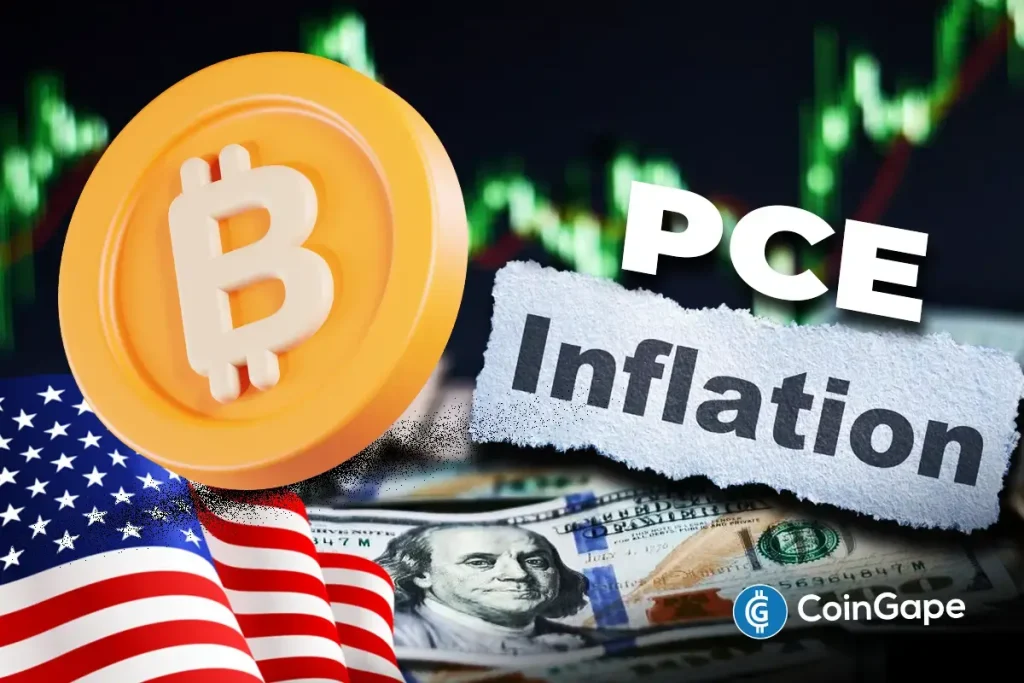The Impact of U.S. PCE Inflation Data on the Crypto Market: A Comprehensive Analysis
The cryptocurrency market has faced significant volatility in recent months, primarily due to economic events such as Donald Trump’s tariffs and the latest U.S. Personal Consumption Expenditures (PCE) inflation report. These factors have contributed to an uncertain climate for digital assets, causing fluctuations that have left many investors anxious. With the recent release of February’s PCE data indicating an inflation rate of 2.5%, the crypto market has experienced further turmoil. But is this disruption fleeting, or might it signal longer-term ramifications? In this article, we will unpack the implications of the PCE inflation report on Bitcoin prices and the broader crypto landscape.
The PCE inflation index is a vital metric utilized by the U.S. Federal Reserve to gauge inflation levels. Significant deviations from expected figures can greatly influence the Fed’s monetary policy decisions, consequently impacting global financial markets, including cryptocurrencies. According to the Bureau of Economic Analysis, the February inflation rate aligned with expectations at 2.5%. However, the core PCE, which excludes volatile food and energy prices, came in at 2.8%, marginally surpassing projections. This persistent inflation emphasizes the challenges facing the economy and the crypto market, raising alarms among experts who fear that continued increases could delay anticipated interest rate cuts from the Federal Reserve. Furthermore, if inflation stays elevated, the specter of stagflation looms over the market.
As the cryptocurrency sector was already grappling with bearish sentiment, the recent PCE inflation data exacerbated the situation, leading to increased market volatility. Many investors faced liquidations of long positions, resulting in an approximate 3% decrease in total market capitalization. Bitcoin’s price dipped by 3.3%, reaching $82,400—its lowest in nearly a week—while many altcoins, including HYPE, TON, and FLOKI, also faced substantial losses. Analysts such as Peter Brandt have raised concerns that Bitcoin could plunge to around $65,635 given the current market conditions. However, they project that the impact of the February inflation data remains neutral to bearish in the long run, contingent on the Fed’s forthcoming decisions and external economic pressures.
Despite the present downturn, optimistic long-term predictions remain for Bitcoin and the crypto market. Analysts, including Michaël van de Poppe, foresee an upward trend driven by positive developments in U.S. policy regarding cryptocurrency regulation and institutional investment, including the potential establishment of a Bitcoin reserve strategy. The cyclical nature of the crypto market suggests that after this period of turmoil, a recovery phase may be on the horizon, contingent on shifts in investor sentiment and macroeconomic stabilization.
As we look ahead, the effects of the U.S. PCE inflation report on the crypto market have instigated a temporary downturn that remains critical for Bitcoin and other digital assets. The upcoming days and weeks are likely to pose challenges as investors navigate this turbulent landscape. Short-term volatility, influenced by macroeconomic trends and regulatory developments, will play a crucial role in the market’s direction. However, experts predict a substantial rebound for Bitcoin and other cryptocurrencies, supported by favorable policies and renewed market confidence.
In conclusion, while the current PCE inflation data has ushered in uncertainty and instability within the crypto market, long-term forecasts indicate a bullish outlook. Investors should remain vigilant, keeping a close eye on macroeconomic indicators and Fed decisions as they prepare for potential market shifts. By understanding these dynamics, cryptocurrency enthusiasts can navigate the landscape more effectively and capitalize on future opportunities as the market stabilizes.
Frequently Asked Questions:
-
What is the PCE inflation index and why is it important?
The PCE inflation index measures inflation trends and is closely monitored by the Federal Reserve, which uses it to shape monetary policies that influence the crypto market. -
How did the recent U.S. PCE inflation report affect the crypto market?
The U.S. PCE inflation report contributed to a significant crash in the crypto market, with Bitcoin’s price dropping 3.3%, impacting numerous altcoins as well. - What are analysts predicting for Bitcoin’s price moving forward?
While some analysts, like Peter Brandt, project a potential decline to $65,635, others express optimism for a recovery based on long-term trends and regulatory changes.
As we continue to explore the ever-evolving crypto landscape, it’s crucial for investors to conduct thorough market research and remain informed about economic indicators that may influence their investment strategies.


